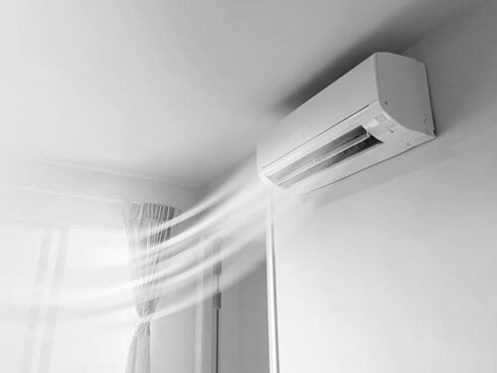If you’re thinking about having an air conditioner installed in your home, you may be wondering if you need existing ductwork to do so. The simple answer to this question is no, but the more nuanced answer is that it depends on a few factors. Let’s take a deep dive into the world of ductwork to help you make the best decision for your home.
Types of Air Conditioning Systems
There are three main types of air conditioning systems: window air conditioners, central air conditioners, and ductless mini-splits. Each type has different requirements when it comes to ductwork and installation practices.
Window air conditioners are the simplest and most inexpensive type of air conditioner to install. These units do not require ductwork as they are self-contained and only require an electrical connection.
They can be placed in any window in your home, which makes them easy to install and remove as needed. However, because they are not connected to ductwork, window air conditioners are only effective for cooling small spaces and will not work well for larger areas.
Central air conditioners, on the other hand, do require ductwork to function. This type of AC unit is a more permanent solution for cooling your home as it is installed in the attic, crawlspace, or other out-of-the-way locations.
Central AC units are also more powerful than window units, making them a better choice for cooling large spaces. The air is distributed through a system of ducts, which is why ductwork is necessary for this type of AC unit.
If you’re looking for a happy medium between window AC and central AC, you may want to consider installing ductless mini-splits. Ductless mini-splits don’t require ductwork, and they are more powerful than window units. Mini-splits are able to cool larger areas.
Mini-splits consist of an outdoor unit that is connected to one or more indoor units via a small conduit. The outdoor unit pumps refrigerant to the indoor units, which then circulate the cooled air into your home. Mini-splits are a good choice for homes that don’t have existing ductwork, and they can be used to cool multiple rooms or zones in your home just like central AC.
Home Layout Considerations
In addition to the type of air conditioning system you choose, the layout of your home may also dictate whether or not ductwork is necessary.
If your home does not currently have ductwork, it may be possible to install it. However, this is a major project that will require significant changes to your home’s structure. This process involves opening up walls, ceilings, and floors to run the ductwork through your home.
Some homes are more suitable for new ductwork than others. If your home is small or has an open floor plan, it may be easier to install ductwork than if your home is large or has a more complex layout. In addition, homes with unfinished basements or crawlspaces are generally easier to work with when it comes to installing ductwork.
Given how complex and costly it can be to install ductwork when there is no existing framework, installing ductless mini-splits is likely your best option if you want the benefits of central air without the need for ductwork. However, if you are set on having central air conditioning, it may be worth the investment to have ductwork installed in your home. A qualified HVAC technician can help you determine whether or not your home is a good candidate for new ductwork.
Benefits of Ductless Air Conditioning
Ductless mini-splits allow you to cool your whole home without the need for ductwork, but that’s not the only benefit of this option.
For one, ductless mini-splits are more energy-efficient than central air conditioners. Here’s why. With central AC, the air has to travel through a system of ducts before it reaches your living space. This process can result in a significant portion of the cool air being lost before it ever reaches the designated area.
Ductless mini-splits don’t have this problem because the air is circulated directly into your living space. As a result, you will likely see a decrease in your energy bills when you switch to ductless mini-splits.
In addition, ductless mini-splits are easier to install than central air conditioners. If you’re not comfortable with major home renovations, ductless mini-splits may be the better option for you.
Mini-splits are also more versatile than central air conditioners. With a ductless system, you can choose to cool individual rooms or areas of your home, which gives you more control over your home’s climate.
Central air conditioners cool your entire home at once, so you cannot target specific rooms or areas. This type of whole-home cooling is also an option with ductless mini-splits, but you have the added benefit of being able to cool only certain areas of your home if you choose.
Key Considerations Before Installing Ductless AC
Although ductless mini-splits have many benefits, there are also some things you should keep in mind before having one installed in your home.
First, consider the size of your home. If you have a small home, a single-zone mini-split may be all you need. However, if you have a larger home or one with multiple floors, you may need a multi-zone mini-split system to effectively cool your entire home.
In addition, you’ll need to decide where you want the indoor unit, called the air handler, to be located. The air handler is the part of the ductless system that is mounted on your wall or ceiling, and it needs to be close to an exterior wall so that the refrigerant lines can be run from the outdoor unit to the indoor unit.
You’ll also need to think about where you want the outdoor unit, called the condenser, to be located. Like the air handler, the condenser needs to be close to an exterior wall so that it can be properly vented.
Finally, you’ll need to decide whether you want a single-stage, two-stage, or variable-speed compressor. Single-stage compressors are the most basic type, and they are either on or off. Two-stage compressors have two settings, low and high, which give you more control over the cooling output of the unit.
Variable-speed compressors are the most energy-efficient option as they can adjust their cooling output to match the needs of your home. This type of compressor is a good choice if you’re looking to save money on your energy bills.
Get Advice From Our Experts
If you’re not sure whether or not ductless air conditioning is right for your home, the HVAC experts at True Climate Heat + Air are here to help. We can assess your home and cooling needs to determine whether a ductless mini-split or another type of air conditioning system would be a better option for your needs.
Our team has been serving homeowners in the Edmond, OK area since 2005, and we have the experience and knowledge to help you keep your home comfortable year-round. In addition to our comprehensive air conditioning installation and repair services, we also offer heating services, indoor air quality solutions, and plumbing. To learn more about our HVAC services or to schedule a service appointment, contact True Climate Heat + Air today.


